

Forest Bathing in New Jersey

bathing and foraging was all about. The tour was included in my stay.
On a hot July morning I visited Crystal Spring Resort in Sussex County again to see what forest

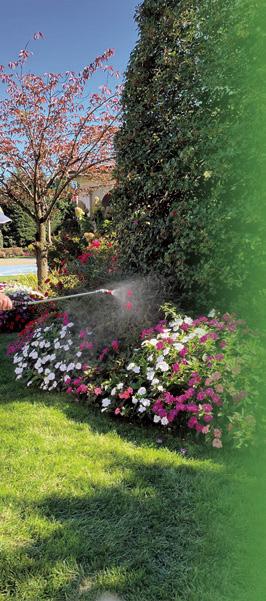
I was welcomed by Chris Mulvihill, co-owner of the resort, and then I was introduced to Crystal Springs Resort Naturalist Jennifer Dignon in the lobby of the Grand Cascades Lodge. Dignon leads the forest bathing and foraging tours.
Dignon told me that she spends hours every

day using her five senses to connect to the forest. Those five senses are hearing, sight, smell, taste, and touch. She also talked about how breathing deepens the connection with her inner self and the natural world.
As we continued to chat in the lobby, Dignon explained that Shinrin-Yoku is a term developed in Japan by Tomohide Akiyama in (Cont. on Page 14)







Tom Castronovo/Photo

Hydrangea season is happening throughout the Philadelphia area and New Jersey with the traditional lacecaps (flat-topped flower clusters) and hortensia (balllike hydrangeas) in full bloom. Also in bloom are all of the native hydrangeas which have been becoming increasingly popular over the last 20 years.
The most iconic native hydrangea is Hydrangea arborescens ‘Annabelle’, which has been an important ornamental plant for decades. It is characterized by large heads of mostly sterile white flowers that bloom throughout June and into July. Before the flowers turn white, they are an attractive lime green. After flowering, they fade and eventually become a tawny color and can provide considerable winter interest. In the wild, Hydrangea arborescens can be found in dark, wooded areas throughout the eastern half of the United States, often growing on rocky slopes and outcroppings. The flowers are characterized by a much smaller head of flowers or sometimes a lacecap-type flower. While Hydrangea arborescens can tolerate deep shade, it will flower better in part shade to full sun. Commonly called the smooth hydrangea, it can be pruned differently than most hydrangeas. It blooms on current season’s growth or

Pennsylvania Horticultural Society
By Andrew Bunting Vice President of Horticulture
Native Hydrangeas
“new wood”, therefore in late winter or early spring it can literally be cut back to the ground just like a perennial would be treated. This type of pruning creates a more compact plant. It will also help to rejuvenate the shrub from year to year.
In recent years there has been considerable plant breeding work done with Hydrangea arborescens to create different cultivars including the Invincibelle® Series. Ruby and Garnetta are pink. H. arborescens Invincibelle® Spirit is soft pink. Wee White® is a diminutive form of ‘Annabelle’. Local plantsman, Rick Ray, selected ‘Haas Halo’ several years ago. It is characterized by very large flat-topped clusters of white flowers. On many hydrangeas the showy white bracts are infertile flowers and provide little resources for pollinators, however ‘Haas Halo’ has all fertile flowers and is one of the
very best shrubs for attracting pollinators to the garden.
The oakleaf hydrangea, Hydrangea quercifolia, is another great native hydrangea. In the wild it is also found as an understory shrub throughout many southern states, however it is perfectly hardy in the Delaware Valley. It is characterized by an abundance of both white fertile and sterile flowers that are displayed in a cone-like inflorescence. This multi-stemmed shrub can reach ten feet tall with an equal spread. The leaves are oak-like, resembling the leaves of a red oak, Quercus rubra. While most hydrangeas don’t have remarkable fall color, Hydrangea quercifolia has an attractive wine-red fall color. Also, the stems have an attractive cinnamon colored peeling bark. The oakleaf hydrangea only requires selective pruning.
There are many excellent selections of the oakleaf hydrangea. Snow Queen™
has been around for decades and has a robust stature and an abundance of cone shaped flowers from mid-June to mid-July. ‘Snowflake’ has double flowers that make the flower head so heavy that they are pendant. I have seen ‘Snowflake’ effectively used planted on top of a wall where the flowers can spill over the wall. ‘Ruby Slippers’ is an introduction from the United States National Arboretum. It is more diminutive in its stature, only reaching five feet tall at maturity. Little Honey™ also has a more compact habit. It was selected for its vibrant chartreuse-yellow leaves. To get the best foliar display, grow in part shade or dappled shade. Another hydrangea relative that is native to the southern U. S. is the wood vamp, Decumaria barbara This climber is often found growing on trees in the wild and can take quite moist conditions. It is perfect for growing on structures or
fences. It has clusters of fertile flowers in early summer that have a sweet fragrance. The fall color is a striking butter yellow. In its native habitat, the wood vamp can tolerate numerous conditions. On a walk in Alabama, I observed it at the edge of a boardwalk thriving in standing water. In the garden, it will flower best in part shade to full sun.
Editor’s Note: Andrew Bunting is Vice President of Horticulture for the Pennsylvania Horticultural Society. He is one of the most recognized horticulturists in the Philadelphia, Pa., region and a highly regarded colleague in the world of professional horticulture. Bunting has amassed a plethora of awards, including the American Public Gardens Association Professional Citation, Chanticleer Scholarship in Professional Development, Delaware Center for Horticulture’s Marion Marsh Award, and the Certificate of Merit from the Pennsylvania Horticultural Society. In addition, Bunting has lectured extensively throughout North America and Europe, and participated in plant expeditions throughout Asia and Africa. Learn more at https://phsonline.org/team/ andrew-bunting
Bartlett Tree Experts Expands in New Jersey with Acquisition of Action Tree Service, Inc.
Bartlett Tree Experts, the family-owned global leader in scientific tree and shrub care since 1907, is pleased to announce it has expanded in Central New Jersey with the acquisition of Action Tree Service, Inc.
Owned and operated by Don Murphy and Bert Kuhn based in Warren, New Jersey, Action Tree has provided quality tree and shrub care for residential and commercial customers in Somerset County and surrounding areas for more than 43 years.
Jim Ingram, President and Chief Operating Officer of Bartlett Tree Experts said, “Property owners of Somerset County in the Garden State can now benefit from Bartlett’s global resources and industry-leading tree and shrub diagnostic and research capabilities. I am excited to welcome the talented arborist team from Action Tree to Bartlett Tree Experts!”
Kuhn said joining Bartlett in the Company’s
existing Lebanon, New Jersey office was a great move for Action Tree, given Bartlett’s industry-leading training and career development opportunities. Customers previously serviced by Action Tree will benefit from the scientific backing of the R.A. Bartlett Research Laboratories and Arboretum, which supports all Bartlett offices with the most advanced tree care solutions available. Kuhn said, “Our commitment to excellence aligns.”
Wayne Dubin, Vice President and Division Manager of Bartlett’s operations in New York and New Jersey, said, “The acquisition of Action Tree Services will expand Bartlett’s scientific tree and shrub care for more of the Somerset County residential and commercial property owners, which will go a long way toward improving the health and beauty of their trees and landscapes.”
Founded in 1907, The F.A. Bartlett Tree Expert Company has been the world’s leading scientific tree and shrub care company for over 118 years.
The company operates the largest shade tree lab in the world, The Bartlett Research Laboratories, in Charlotte, NC. With the latest research from its team of 18 PhDs in fields such as soil science, conservation, plant pathology, entomology, horticulture and ecosystem management, the company provides species-specific tree and shrub care plans for its customers to ensure optimum growing conditions and health for beautiful landscapes. From tree inventory and management plans, insect and disease management and soil care, to pruning and removal, Bartlett’s certified arborists provide more than 188 services to clients from 189 operations in 42 U.S. states, Canada, the United Kingdom, and Ireland, with a training center in Mexico. Bartlett has the largest professional arboricultural consultancy team and safety advisory team in the industry. The Company’s corporate offices are located in Stamford, CT. To learn more, visit www.bartlett.com.
As you read this, we are in what were long ago coined as the “Dog Days of Summer,” originally named for the rising of the star, Sirius (the Dog Star).
More recently, the Dog Days have come to mean the hottest, most intense days of summer. These days bring challenges and opportunities to growers, both commercial farmers and home gardeners, provided they take all the precautions necessary when the temperatures approach the triple-digit mark.
Challenges include increased severe weather risks that can threaten crops with wind or hail, or even the rare (for the Northeast, at least) tornado that can be spawned by a hurricane or severe thunderstorm, such as the one that impacted the Wellacrest dairy farm in Gloucester County in 2021. Add to that increased insect pressures that can lead to crop damage. And, of course, extended hot, dry periods that lead to drought and impact product size and harvest yield if too severe.
On the flip side, the benefits can include increased plant growth on warm, full-sun days for warm weather crops

NJ Dept. of Agriculture
By Joe Atchison III Assistant Secretary of Agriculture
The Dog Days and Agriculture
like corn, tomatoes, peppers, melons, and eggplants. Also, there can be improved root growth, as plant roots grow deeper in search of moisture that the heat is removing from higher surfaces.
Be careful as you garden in these particularly warmer days. I know it’s easy to get “caught up” in the activity of gardening and paying attention to every detail of your plants and soil. But keep a sharp eye on yourself, as well. Gardening is great exercise, but, like any exercise during soaring temps, safety precautions are paramount.
The wild weather swings that New Jersey, as a temperatezone state, can experience are part of what makes commercial farming such a gamble. This
time last year, we already were noticing a lack of rain and stress to crops that the drought and high temperatures were creating. Throughout most of this spring and summer, rain has seemed plentiful, even if the parched ground from the previous year still seemed thirsty.
As planting begins to slow, more attention to harvesting late-summer items and tending to fall crops can occur. I’ve also seen mentions of soil aeration as cicadas emerge from long slumbers. I’m not sure how much benefit that is, but it really feels like summer when you hear that buzzing in the trees. When I was a kid, one of my favorite times was sitting on the front porch eating an ice-cold slice of watermelon and spitting
Jersey Tastes. Jersey Tastes.
INGREDIENTS
FAMILYSIZE,SERVES10
PORTIONSIZE:8oz.
VINAIGRETTE
1shallot,finelychopped 1lemon,zested,juiced
2Tbsp.whitewinevinegar
SALAD
3lbs.NJyellowpeaches,sliced½inchpieces 2lbs.cucumbers,sliced 4oz.feta,crumbled ¼cupbasil,chopped ¼cupmintchopped saltandpepper
FUNFACTS!
PeachesoriginatedinChinaover8,000yearsagoand havebecomeafavoriteinmanycultures.Alargepeach hasfewerthan70caloriesandcontains3gramsoffiber. PeachesareattheirpeakfromJunetotheendof August.
the seeds out into the yard (we had seeds in all of them back then) while listening to the cicadas revving their engines and waiting to see who would spot the first lightning bug of the evening.
I still like that, but I have other fun things to do now too that revolve around agriculture. We go out to visit the agricultural fairs all around the state that I wrote about last month, but also over the past few years, we’ve seen the emergence of more and more summer agritourism. Opportunities abound to visit farms and see where agriculture is happening. I’ve done on-farm activities, visited on-farm breweries, picked peaches, and walked through a couple sunflower mazes. These mazes are… “a-maze-
ing” with tens of thousands of blooms spread out over acres of farmland. The “Dog Days” are actually a great day outdoors supporting local farmers. And you can take some flowers home with you along with some Jersey sunflower seed birdseed as well. Just be sure to bring some water along with you to keep hydrated and have your camera as well to capture this wide-open scenery.
Some people dislike the hot weather, but our Jersey Fresh summer crops love it and so do I. It seems to loosen my joints, free my mind, and take me back to summer vacation.
So next time you’re enjoying a slice of watermelon, a juicy peach, or a nice tomato sandwich, be sure to thank our farmers working through these Dog Days of Summer to provide us with the very best.
Editor’s Note: Joe Atchison III is the New Jersey Assistant Secretary of Agriculture. Atchison is also the Director of the Division of Marketing and Development for the New Jersey Department of Agriculture. He can be reached at (609) 292-3976.
Peach&CucumberSummerSalad
DIRECTIONS
1
2
3
Placeshallotinasmallbowlandseasonwitha pinchofsalt.Finelygratezestfromlemoninto bowl;cutlemoninhalfandsqueezeinjuice.Add vinegarandtosstocombine.Letsitfor10 minutes.
Placeslicedpeachesandslicedcucumbersina mediumbowl.Addvinaigretteandgentlytoss untilwellincorporated.
Addfeta,basil,andmint,lightlytoss.Finishwith saltandpeppertotaste,serve.

https://www.nj.gov/agriculture/farmtoschool

RUTGERS NJAES/RCE
Rutgers Cooperative Extension
Phone Directory
Atlantic County
Phone: 609-625-0056
Bergen County Phone: 201-336-6780
Burlington County Phone: 609-265-5050
Camden County Phone: 856 216 7130
Cape May County Phone: 609-465-5115
Cumberland County Phone: 856-451-2800
Essex County Phone: 973-228-2210
Gloucester County Phone: 856-224-8040
Hudson County Phone: 201-915-1399
Hunterdon County Phone: 908-788-1339
Mercer County Phone: 609-989-6830
Middlesex County Phone: 732-398-5260
Monmouth County Phone: 732-431-7260
Morris County Phone: 973-285-8300
Ocean County Phone:732-349-1246
Passaic County Phone: 973-305-5740
Salem County Phone: 856-769-0090
Somerset County Phone: 908-526-6293
Sussex County Phone: 973-948-3040
Union County Phone: 908-654-9854
Warren County Phone: 908-475-6505



From the Director’s Desk Rutgers
Outreach
Provided by Brian Schilling Director
The Three Faces of August
August is one of the busiest months in the home garden, as it is time to harvest, to plant, and to endure the heat of summer. Let’s look at some things to add to your August “to-do” list.
Summer crops are ready for harvest in most New Jersey gardens, and you will want to stay on top of this. Regular harvesting keeps your plants producing. Most plants grown for food are technically “fruit,” which, botanically, refers to a plant part containing seeds. Therefore, most things we call vegetables in the grocery store are actually fruits, such as tomatoes, cucumbers, okra, peas, peppers, and squash. When the seeds inside a fruit grow to maturity, the plant has accomplished its goal of reproduction and will stop producing. This is why consistent harvesting keeps the plant productive.
Crops other than fruits, such as carrots and leafy greens, also need to be harvested regularly, as they can become tough or bitter as they age. Some crops, such as broccoli and cauliflower, are flower buds and can bloom if left too long. Stem crops such as asparagus will also bloom if not harvested early.
Here is another tip for harvesting: rather than tugging produce off the plant, consider using scissors or clippers. If the fruit isn’t ready, you run the risk of tearing the plant’s skin or breaking a branch, opening the plant up to infection. A nice clean cut is a much healthier way to glean from your garden!
While you are harvesting, it is also time for planting fall and winter gardens. Start your fall crops from seed now to ensure they have time to produce their
crop before regular frosts set in. If you purchase young plants, make sure to harden them off before planting in August’s hot, dry weather. Remember to take care of yourself while gardening in mid-summer as well! Dehydration and overheating are a consideration for us as well as for our plants!
There is a large variety of vegetables that enjoy New Jersey’s late summer and fall climate. They include root vegetables such as beets, carrots, turnips, radishes, and onions; legumes such as beans and peas; soft gourds such as zucchini, cucumbers, and winter squash; and lettuce and other leafy greens.
The third consideration for August gardens is watering, as the high temperatures and low rainfall typical in this month may require your attention. There are best practices for watering gardens, landscapes, lawns, and containers. Reach out to your county’s Extension office if you are unsure how to proceed.
It is important to water strategically to both avoid wasting water and benefit your plants. Watering deeply and less often keeps the roots hydrated and avoids losing water to evaporation or runoff.
Water containers regularly, as window boxes and planters can dry out quickly. Make sure you water until water flows out the bottom of the planter, ensuring the soil is damp throughout. Keep in mind that plants will need a supplemental, time-release fertilizer to ensure that the nutrients are maintained during these heavier waterings.
Ornamental trees also need a healthy drink in
August. Water slowly and deeply, allowing water to sink into the soil and reach the roots. Apply water at the outer edge of the canopy, called the dripline, rather than near the trunk. Make sure to move the water source around the tree rather than watering in one spot to ensure the entire root zone is irrigated.
Lawns will also appreciate longer irrigation periods less frequently, as they extend roots into cooler, deeper soil. Different types of grass prefer different watering and care in the heat of summer. If you need help identifying the best watering techniques, fall vegetable garden planting suggestions, or have any horticulture questions, visit our new website at www.Go.Rutgers. edu/GardenHelpline. Here you will find a form to enter your support needs, and someone will respond to you promptly. There are also resources for many horticulture topics here as well.
Even though the weather is hot and gardening might not be at the top of your outdoor activity list, now is the time that your garden and landscape need your attention! Grab your hat, sunscreen, bug spray, and water bottle, and head out to your garden.
Rutgers has launched a new website for home, lawn, and garden resources. Here you will find resources, programs, and ways to find help for your gardening questions. If you are interested in learning more or connecting with us, go to www.Go.Rutgers.edu/ home-lawn -garden. You can request information about becoming a volunteer, register for classes, and more!
RUTGERS NJAES/RCE
LAND-GRANT UNIVERSITY NEWS
Distinguished Professor Joanna Burger Has Endowed a Legacy Professorship at Rutgers School of Environmental and Biological Sciences
The Rutgers University Board of Governors (BOG) voted today, June 17, to establish the Joanna Burger Endowed Legacy Professorship to support faculty in the Department of Ecology, Evolution, and Natural Resources who are advancing the study of behavioral ecology in innovative and impactful ways.
This legacy professorship is the first for the School of Environmental and Biological Sciences (SEBS). Legacy professorships, approved by the BOG in 2020, enable current, emeritus and retired faculty and their families to create an endowed professorship that pays tribute to their legacy.
For more than five decades, Burger has been a pioneering force in the field of behavioral ecology at Rutgers University. From her early post-doctoral work studying brown-hooded gulls in the remote pampas of Argentina to long-term field studies across New Jersey, her career has been defined by fearless exploration, scientific rigor and a deep commitment to understanding the natural world.
Now, her extraordinary legacy will live on through the Joanna Burger Endowed Legacy Professorship housed within SEBS.
“When I came to Rutgers in the early 1970s, there were few women in the sciences,” Burger recalled. “But I found a home here—an academic environment where I could teach, publish and follow the science wherever it led.”
That journey led her into marshes, bays and forests to study species ranging from fiddler crabs and pine snakes to migratory shorebirds and diamondback terrapins. Her fieldwork, often initiated with minimal funding and maximum curiosity, grew into some of the longestrunning ecological studies in the country.
The Joanna Burger Endowed Legacy Professorship will provide support to faculty working in behavioral ecology—support that Burger knows from experience can be transformative.
“Understanding animal behavior is essential to conservation, management, and our broader coexistence with wildlife,” she said. “This professorship is about enabling research that might be a bit off the beaten path, or too new to attract traditional funding—but that has the potential to lead to important scientific breakthroughs.”
Equally important, the professorship brings recognition and visibility to the work of behavioral ecologists at Rutgers.
“Rutgers is a large institution, and it’s easy for individual disciplines to become siloed across campuses and departments,” Burger noted. “This can spotlight important work, foster connection among researchers, and build a stronger sense of academic community.”
Her generosity in establishing this endowment reflects a lifelong commitment to giving back—to the university that nurtured her career, to the students she mentored and to the future of science driven by curiosity and compassion.
Burger’s passion for behavioral ecology began early. Growing up on a farm, she spent her childhood tracking bird nests among the zucchini plants, watching gulls follow her father’s plow, and learning from her parents to appreciate both wildlife and wildflowers.
“Farm life taught me that you must care for the land and the creatures that live on it—and that hard work, when driven by passion, leads to both success and joy,” she said.
That ethic has defined her decades at Rutgers. As a researcher, mentor and trailblazer, Burger has inspired countless students and colleagues. With the establishment of the Joanna Burger Endowed Legacy Professorship, her influence will extend far into the future— supporting faculty who are driven to ask bold questions, pursue meaningful discoveries and shape the field of behavioral ecology for generations to come.
Scientists Find a New Way to Help Plants Fight Diseases
In a discovery three decades in the making, scientists at Rutgers and Brookhaven National Laboratory have acquired detailed knowledge about the internal structures and mode of regulation for a specialized protein and are proceeding to develop tools that can capitalize on its ability to help plants combat a wide range of diseases.
The work, which exploits a natural process where plant cells die on purpose to help the host plant stay healthy, is expected to have wide applications in the agricultural sector, offering new ways to protect major food crops from a variety of devastating diseases, the scientists said.
In a study published in Nature Communications, a team led by Eric Lam at Rutgers University-New Brunswick and Qun Liu at Brookhaven National Laboratory in New York reported that advanced crystallography and computer modeling techniques have enabled them to obtain the best picture yet of a pivotal plant protease, a protein enzyme that cuts other proteins, known as metacaspase 9.
“Understanding the shape and mode of activation for metacaspase 9 means we can now design long-sought tools to harness its known biological functions to protect plants from diseases and environmental stresses that could decimate crops,” said Liu, a structural biologist in the Biology Department at Brookhaven.
The team has already started. Lam and Liu have filed for a provisional patent with the U.S. Patent and Trademark Office on technologies that can be developed from the discovery.
“This work could usher in much safer and effective treatments for our crops worldwide,” said Lam, a Distinguished Professor in the Department of Plant Biology in the Rutgers School of Environmental and Biological Sciences and an author of the study.
Using Arabidopsis thaliana, an oft-studied plant also known as mouse-ear cress, the researchers employed a method known as X-ray crystallography at Brookhaven’s National Synchrotron Light Source II (NSLS-II) to reveal the shape of metacaspase 9 at the atomic level.
Knowing from previous research that the enzyme is activated by increased acidity, they observed and recorded how the enzyme changes shape when exposed to different concentrations of acid to reveal the key changes in the protein during its activation.
Their newly acquired complex understanding combines crystallography data with molecular dynamic simulations also completed at Brookhaven. This computerbased method allowed them to observe how the enzyme behaved and changed under different conditions. The team also performed laboratory experiments, including site-specific mutagenesis, a technique used by scientists to make precise changes to a specific part of a DNA sequence and validate the importance of specific parts of the protein that are needed for its activity.
By integrating this knowledge, the researchers discovered different parts of the enzyme act like brakes or accelerators to ensure that it only will be active at an acidic pH level.
Lam and his team have collaborated with Liu and his Brookhaven team for a decade in pursuit of a better understanding of the enzyme along with a related version, metacaspase 4. Lam has studied the process at the heart of the enzyme’s pivotal role in plant health – a phenomenon known as programmed cell death or cell suicide – for the past 30 years.
Programmed cell death is a process where cells intentionally die as part of a natural and controlled mechanism, Lam said. It is the cell’s way of committing
suicide for the greater good of the organism. The process helps remove damaged or unnecessary cells, allowing an organism to stay healthy and develop properly. In plants, programmed cell death is crucial for fighting diseases and responding to stress.
Work by other researchers has shown that metacaspase 9, which exists in plants but not in animals, is connected with programmed cell death and centrally involved in two major types of disease-causing agents for plants. When dealing with biotrophs, which are organisms that feed off living cells, metacaspase 9 helps kill infected cells to stop the disease. But with necrotrophs, organisms that kill plant cells before eating them, metacaspase 9 is hijacked into destroying the plant’s own cells faster, which helps the invaders.
The researchers reason that strengthening metacaspase 9 may prevent biotrophic diseases. Conversely, jamming its function means the enzyme won’t assist necrotrophs in killing healthy cells.
An example of a biotroph is the fungus-like oomycetes Phytophthora infestans, which caused the potato blight in Ireland and the ensuing famine in the mid-1800s. “For many of the plant diseases, especially fungi, effective fungicide treatment options are few and, in many cases, environmental concerns are quite serious,” Lam said. “By creating hyperactive versions of metacaspase 9, we may protect plants from these biotrophs by causing cell death at the invasion site earlier, thus cutting off their food supply.”
The research team has done just that, creating what Lam described as “super-active variants” of the enzyme that can be produced by plant genes when prodded to do so and could provide novel resistance traits to a slew of important diseases, such as powdery mildew and rusts.
The severe plant disease known as white mold is caused by the necrotrophic fungal pathogen Sclerotinia sclerotiorum, which can infect many crops. It is one of the diseases caused by fungal pathogens that could cause annual crop losses of between 10% and 20% of a total yield. This translates to financial losses of between $100 billion and $200 billion each year for agriculture, according to statistics compiled by the U.S. Department of Agriculture.
“To combat necrotrophic organisms that kill cells to feed on them, understanding how metacaspase 9 changes at the molecular level can help us create new agri- chemicals that block this enzyme efficiently without harming animals or the environment,” Lam said. “They could be used in agriculture to stop harmful necrotrophs from growing, leading to safer and more effective treatments for crops around the world.”
Other Rutgers researchers who contributed to this study include Zhili Pang, a postdoctoral associate in the Department of Plant Biology at the School of Environmental and Biological Sciences.Haijiao Liu of Brookhaven National Laboratory and Max Henderson of Stony Brook University in New York, graduate students who work under Liu’s supervision, are the co-first authors on the paper. Qinfang Zhang of Stony Brook University also contributed to this study.
This work was funded by the U.S. Department of Energy’s Office of Science and the National Science Foundation. The team used Highly Automated Macromolecular Crystallography (AMX) and Frontier Microfocusing Macromolecular Crystallography (FMX) beamlines at NSLS-II, a DOE Office of Science user facility.
This article first appeared in Rutgers Today.









In the Chef’s Corner
By Andy Lagana Chef
Grilled Octopus with Spicy Jalapeño Cream Corn
Good Day Gardener News readers. As summer is moving along, I keep the grill at the ready. This month, I’m sharing a delicious Grilled Octopus with Spicy Jalapeño Cream Corn – sure to become a favorite.
Different octopus species can be used for grilling, including the Giant Octopus (known for its large size and thick tentacles) and the Giant Pacific Octopus (a culinary favorite for its tenderness). Further, octopus is a good source of protein and several essential nutrients, including iron, zinc, selenium, and vitamin B12. It also contains omega-3 fatty acids, which are beneficial for heart health.
Get started by gathering 2 lbs. fresh whole octopus tentacles, 4 tablespoon extravirgin olive oil – divided, 2 lemons – 1 squeezed and zested and the other quartered and set aside, 2 teaspoons black pepper, 1 tablespoon fresh chopped or dried oregano, 2 teaspoons kosher salt, 2 tablespoons capers, ½ red onion – thinly sliced, 1 tablespoon oregano, 10 pitted olives – chopped, 2 tablespoons balsamic vinegar, 2 tablespoons capers and 10 cherry tomatoes cut in half.
Place the octopus in a pot and cover with cold water. Cook over medium flame until the water begins to boil, then reduce heat and simmer the octopus until tender. This will take between 45 minutes to an hour. To check for tenderness, you should be able to pierce the thickest part of the tentacle easily with a paring knife.
Remove octopus and shock it in cool water, then
remove and pat dry with a paper towel. For maximum char, let the tentacles dry sitting on paper towel in the fridge for a further 2-3 hours. The drier they are, the more char you will get without overcooking them.
Light a grill for high heat cooking, 450° F or more. Douse the tentacles in half of the olive oil, then sprinkle over half of the salt. Then, in a small bowl, combine the remaining olive oil, salt, oregano, and black pepper. Add the juice and zest of one of the lemons. Cut the remaining lemon into wedges and set aside.
Once your grill is hot, lay the tentacles directly over the coals to char and crisp on the edges. Leave them for 2-3 minutes, then flip them over and char the other side for a further 2-3 minutes.
Remember that the octopus is already cooked – you are just applying the flavor of the grill, so the grilling will be very quick. Basically, cook the octopus until you have the color you want and then remove.
Add to the bowl with all other ingredients and mix, serve on a nice platter and top with the juices from the bowl, garnished with lemons and chopped parsley.
For the corn side dish, bring together 2 tablespoons salted butter, 2 tablespoons AP flour, 2 cups half & half, 3 teaspoons Hardcore Carnivore Texas Jalapeño Salt, 2 fresh jalapeños –finely diced (optional), 16 oz. fresh or frozen corn kernels and 1/2 cup cotija or grated parmesan cheese.
Place the butter into a skillet set over medium-high
heat, and melt. Sprinkle the flour on top of the melted butter. Slowly add the half & half a little at a time, whisking constantly until the mixture is smooth. Stir in the HC Jalapeño Salt.
Add the fresh jalapeño (if using), and the corn. Stir, then bring the mixture to a simmer and cook for 15 minutes to plump the corn. Scatter the cotija or parmesan cheese evenly across the top, then place the skillet under the broiler for 2-4 minutes until the cheese is golden and bubbly.
My wine pairing recommendation would be a crisp, dry white wine. Grilled octopus often has a smoky, slightly salty, and tender quality. These characteristics make it a great match for wines that offer a balance of acidity, fruit, and minerality. Specifically, consider wines like Albariño or Sauvignon Blanc which have bright acidity to complement the dish’s delicate flavors. Alternatively, a light-bodied rosé or a dry sparkling wine can also provide a refreshing contrast.
And at the end of your meal, I find that simple desserts best complement this pleasing menu. As grilled octopus is a very flavorful dish, the best desserts to pair with it are those that offer a refreshing contrast or complementary flavors. My pick would be fruit kebabs with choices like berries, melons, or citrus. Another option is a citrus sorbet, a classic palate cleanser. Either lemon or grapefruit can be effective in balancing the richness of the octopus. Enjoy!



On July 10th, more than 75 landscape and nursery professionals braved the summer heat and gathered for a special combined meeting hosted by the New Jersey Landscape Contractors Association (NJLCA) and the New Jersey Nursery and Landscape Association (NJNLA). Held at the beautiful Barton Nurseries in Edison, NJ, the event offered a perfect mix of networking, education, and camaraderie among green industry peers.
While the temperature pushed the limits of summer comfort, the atmosphere was anything but uncomfortable. From the moment guests arrived, they were greeted with an impressive spread of delicious food—and yes, there was even a bar to help cool everyone down. The team at Barton went above and beyond to make sure attendees felt welcome and well-fed. And with cold drinks in hand, industry professionals caught up with friends, made new connections, and shared stories for a solid hour before the program began.
As the sun dipped lower, the group split into two for a guided walking tour of Barton’s impressive nursery operation. From colorful container plants to rows of mature
During my drive to work, I pass a number of homes framed by tidy rows of shrubs and neatly trimmed lawns. Spring offers some floral enhancement and there is some purple foliage, but by-and-large, the landscapes remain a steadfast green. Few homeowners consider replacing the lawn with a stylized meadow, featuring sweeps of flowering perennials and grasses.
This style of design provides color, texture and a much-needed habitat for pollinators. Should a stylized meadow be on your wish list, an indispensable grass to consider is Little Bluestem or Schizachyrium scoparium
Schizachyrium is a member of the Poaceae or Grass Family. Featuring around 60 species, this species is native to southern portions of Canada and much of the US, excluding Oregon, California and Nevada. It was originally named Andropogon scoparius in 1803 by the French botanist André Michaux (1746-1802), although its classification was constantly questioned. In 1829 the German botanist Christian Gottfried Daniel Nees von Esenbeck (1776-1858) created the genus Schizachyrium, crafting the name from the Greek Schizein, meaning to split and Achyron for chaff, describing the

The NJLCA Today
By Gail Woolcott Executive Director
Hot Night, Cool Tips, and Great Company
trees, it was a great opportunity to learn more about one of our suppliers and see firsthand the hard work and organization that keeps the nursery running strong. Many thanks to the Barton staff for taking time out of their busy schedules to show us around and answer questions. We returned to the meeting area to see wonderful waitresses offering refreshing cold bottles of water!
But the real heat of the evening came from our guest speaker— Jessica Cook of Fisher & Phillips, LLP. Jessica flew in from Atlanta to deliver an eye-opening and incredibly important presentation on how employers in the landscape and nursery industries can—and should—prepare for I-9 audits and ICE (Immigration and Customs Enforcement) raids.
In today’s climate, even

companies that diligently follow the rules may find themselves dealing with complicated questions or unexpected visits from immigration officials. Jessica’s message was clear: always comply with the law, but also know your rights and responsibilities should an audit or raid occur. She shared what to expect during an I-9 audit, the dos and don’ts if ICE comes knocking, and steps every company should take before a situation arises. Her presentation was practical, actionable, and tailored specifically for green industry employers.
What really hit home was Jessica’s compassion and understanding of how these issues affect not just business owners, but employees as well. Even those who are fully documented may feel anxious given today’s enforcement
environment. Jessica emphasized how important it is to support your team and communicate with clarity. She also provided guidance on how employees should respond if approached by DHS or ICE agents, so they are prepared and protected.
The audience was engaged, the questions kept coming, and it was clear that this was one of the most valuable talks we’ve hosted.
We want to give a huge thank you to Barton Nurseries for opening their doors and sharing their space with us. The setting was perfect, the hospitality was top-notch, and the evening would not have been the same without their support. Thank you also to our partners at NJNLA for working with us to make this joint meeting a success.
At NJLCA, we know that strong connections, relevant
Morris County Park Commission
By Bruce Crawford Horticultural Manager
‘Sweeping’ Together New Garden Visions
slightly split, leafy bracts protecting the reproductive florets. In 1903 the American botanist and the NY Botanic Garden’s Head Gardener, George Valentine Nash (1864-1921) renamed the plant Schizachyrium scoparium. Change came slowly though, since I learned the plant as Andropogon in the 1980’s!
The species epithet is from the Latin Scopa for broom, describing the similarity of the plant come summer to that of a broom!
Little Blue Stem is an integral part of tall grass prairies and is a warm season grass, showing few signs of life until May. The leaves ultimately grow 1-3' long by ⅜" wide and create a mounding, 1-2' tall plant by mid-summer when the flowering stems or culms begin to appear. The culms shift the overall appearance from mounded to an upright broom-shape, as plants
stretch to 3-4' tall. The foliage and culms have an attractive blue color that inspired the common name, and the culms also bear glistening ‘flowers’ that appear along 2-3" long, outstretched branches called rames. These rames not only bear the fertile florets, but are covered with fine white hairs that stand upright as the florets mature and give the plant a glistening effect throughout autumn. Starting in early September the individual segments of the culms turn an attractive red, soon followed by the foliage. It was this wonderful transition of color and the sparkle of the rames that earned it the Perennial Plant of the Year award in 2022!
Of the numerous attractive cultivars, one selection I have long applauded is ‘Standing Ovation’. Its ability to resist taking a midseason
education, and a united industry make all the difference. Events like this are a reminder of how powerful our community can be when we come together. We hope everyone who attended left with valuable knowledge, some new contacts, and maybe even a full stomach.
We are looking forward to seeing everyone at our upcoming events at the New Jersey Contractors Showcase Expo on August 6th at County College of Morris and our 25th Annual Golf Challenge at Crystal Springs Golf Resort on October 8th!
Editor’s Note: Gail Woolcott is the Executive Director for the New Jersey Landscape Contractors Association. Gail was presented with a community service award from the Borough of Fairview, New Jersey for her assistance in leading the 9-11 Memorial Park project and the Legislative Champion of the Year award from the Federation of Employers and Workers of America. She can be reached at 201-703-3600 or by emailing gwoolcott@ njlca.org.
bow is what makes it an exceptional plant! Many seedling-grown plants will collapse in late summer when grown in richer soils. The strong blue culms of ‘Standing Ovation’ enable it to reach 4' tall without the fear of collapsing. A more recent introduction is ‘Ha Ha Tonka’, originating from Ha Ha Tonka State Park in Missouri. Making this selection unique is the densely pubescent foliage that allows it to retain droplets from a heavy morning dew or summer rain, adding a whole new shimmering dimension!
Although not preferred by deer, Schizachyrium does provide numerous benefits to wildlife! The seed is eaten by song and upland game birds, while pieces of the foliage provide the structural building blocks for native bee colonies. Flourishing in zones
3-9, plants prefer a well-drained and gritty soil having a slightly acidic to neutral pH. Plants are also able to endure nutrient poor soils earning it the name of Poverty Grass. Throughout the growing season it makes a nice companion for flowering plants, especially those with blue flowers including False Indigo (Baptisia australis) or the lower growing Harebell (Campanula rotundifolia). The merits of stylized meadows have long been touted for their ability to look great and support numerous beneficial insects while reducing the need for irrigation and fertilizing. Although difficult to pronounce, I remain hopeful that the broom-like Schizachyrium scoparium, with its seasonal beauty and ease of maintenance, will ultimately ‘sweep together’ visions of sustainable gardening for many years to come!
Editor’s Note: Bruce Crawford is a lover of plants since birth, is the Manager of Horticulture for the Morris County Parks Commission, and a Past President of the Garden State Gardens Consortium. He can be reached at BCrawford@ morrisparks.net







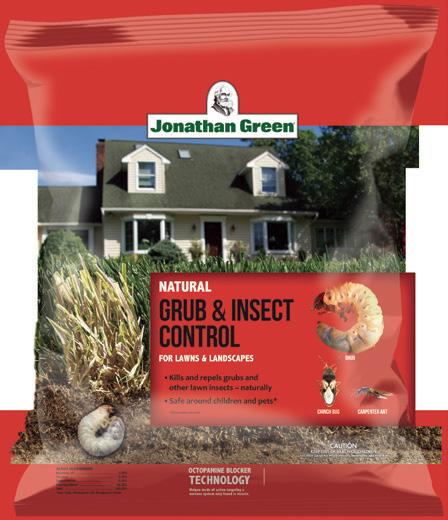




Bobcat® T7X Electric Compact Track Loader


Forest Bathing in New Jersey
(Continued from page 1)
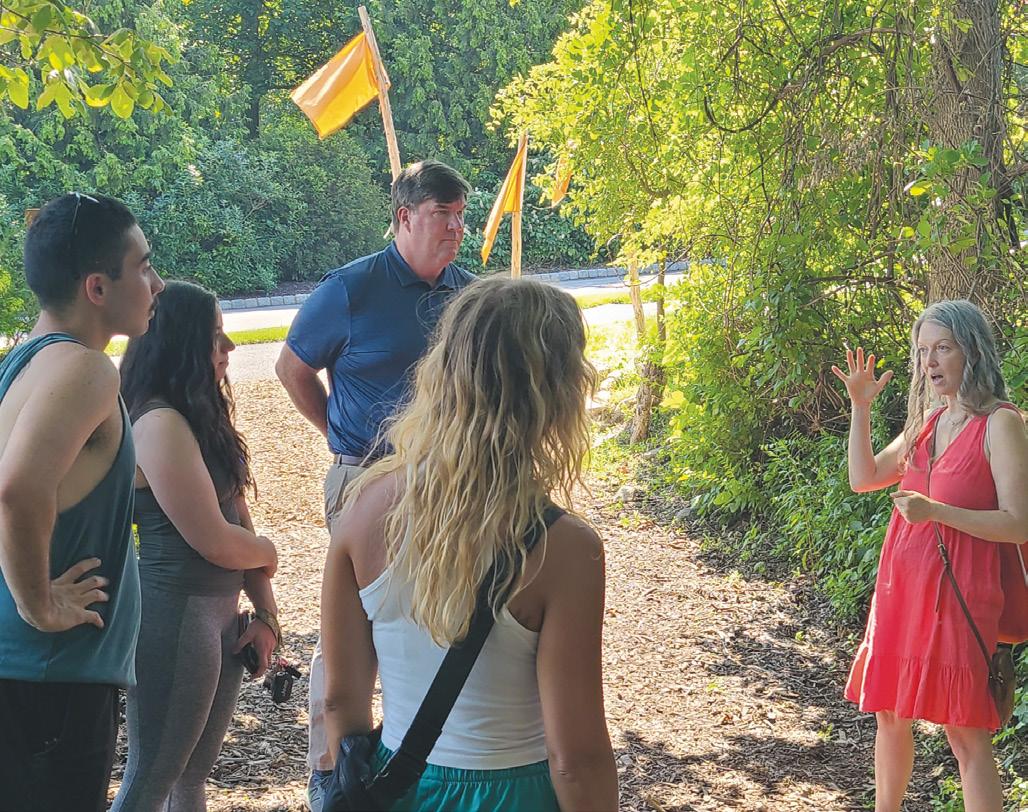
with Pawpaw trees (Asimina triloba) and beautiful white hydrangeas. I was not quite sure of the variety. We then crossed the road to the Crystal Spring Resort’s Wild Turkey Nature Trail trailhead that was adorned by orange colored flags affixed to cedar posts. I learned that the flags were called trail blaze colors, and they have no purpose other than to represent an individual trail.
a trail, a change of direction, or an intersection.
Our group was lead into the trailhead by Dignon. The temperature difference was phenomenal. The temperature in the sun was in the 90s and the air was heavy. Immediately, we were in a totally different microclimate. The temperature must have dropped 15 degrees and the air was easier to breath.
1982 that directly translates to forest bathing and is the broad definition for taking in - through one’s senses - the forest atmosphere. It is not just a walk in the woods, but instead the conscious and contemplative practice of being enveloped in nature, awakening to sensory exploration, and taking in the healing benefits of the forest atmosphere.
Dignon also told me that the simple method of being calm and
quiet amongst the trees and observing nature around us whilst breathing deeply can help both adults and children de-stress and boost health and well-being in a natural way. I was up for anything that can help me de-stress.
It was time to head out and meet the tour group. We all walked across the great back patio overlooking the mountains, down and around the kitchen garden, then along a path lined


Crystal Springs Resort’s Jennifer Dignon talks about Garlic Mustard ( Alliaria petiolata) while pointing to one of the many informational signs along the Wild Turkey
The purpose of trail blaze markers is to help hikers follow a given path. They are used to indicate things such as the beginning and end of
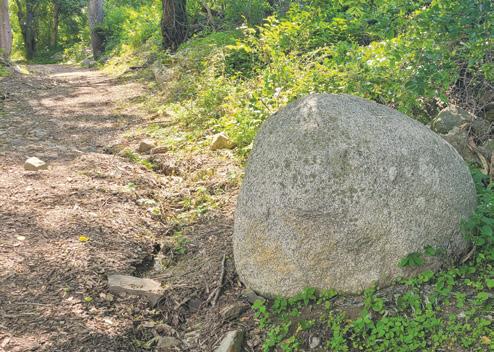
Dignon lead off the tour speaking about the five base senses again. Only this time was she able to show us how they relate to nature. As we walked down the trail, we came upon a sign about garlic mustard. She then showed us garlic mustard growing on the forest floor. We picked it (touch), smelled it (smell), and tasted it (taste). While we were learning about the first three senses, Dignon told us to listen to the birds (hear), and look around the surroundings (sight). Now we all understood what the five base senses were all about.
Shortly after that, Dignon took off her sandals to feel the fresh wood chips and further connect with nature.
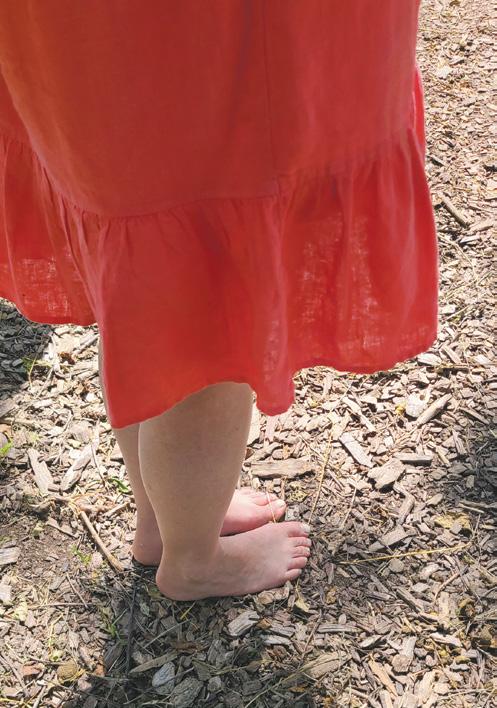
Crystal Springs Resort Naturalist Jennifer Dignon walks barefoot, using her sense of touch to personally connect with nature.
After a short walk of sampling wild Japanese raspberries, being introduced to mugwort (Artemisia vulgaris), and listening to the natural sounds, she asked all of us to sit on the forest floor. We looked around at all the different
Tom Castronovo/Photo
Chris Mulvihill, back center, Anna-Marie Inzirillo, front center, Crystal Springs Resort Naturalist Jennifer Dignon, right, Shan Kadkoui, far left, and Angela Leto, top left, beginning their forest bathing experience on the Wild Turkey Nature Trail.
Tom Castronovo/Photo
Tom Castronovo/Photo
Nature Trail.
Tom Castronovo/Photo
A massive stone awaits forest bathers to relax against near the halfway point of the Wild Turkey Nature Trail.
Tom Castronovo/Photo
Anna-Marie Inzirillo, left, Shan Kadkoui, left center, Angela Leto, right center, and Crystal Springs Resort Naturalist Jennifer Dignon sitting on the freshly wood chipped Wild Turkey Nature Trail.
GardenerNews.com
Which native NJ fern is #2 in size? It is Goldie’s fern Dryopteris goldieana. Goldie’s fern plays second fiddle to NJ’s largest fern, ostrich fern. Goldie’s fern can reach a height of 4½ feet and form a clump 6 feet wide.
It will hybridize with many other species of Dryopteris and produce rare tetraploid hybrids which are larger than either parent. However, don’t worry too much. Mine are 15 years old and only about 3½ feet tall and 3½ feet in diameter, and I have yet to see hybrids even though I grow several species of Dryopteris in a small yard.
The genus name is from the Greek: dyras means oak and pteris means fern. So Dryopteris refers to the fern that frequents oak woods which is frequently the case in NJ. The species and common names are in honor of John Goldie, a Scottish botanist who collected the plant in Canada and took some back to Scotland in 1819. Goldie’s fern grows naturally in moist, rich soils with good drainage and a slightly basic pH. It grows in partial to full shade in areas with high humidity and is found in forested areas, in ravines and

The Native Plant Society of New Jersey
By Hubert Ling Horticulture Chair
Second Fiddle
seeps, or on the edges of wet areas. It is listed as facultative (FAC) thus doing well in wet or medium soils and grows at a moderate rate.
Goldie’s fern is a majestic but uncommon fern in northeastern North America. It ranges from Canada south to Georgia but is not common anywhere. It is listed as a G4G5 plant (globally not very common) and as S2 in NJ, imperiled and only found in 20 or fewer sites generally on calcareous soil in Northern NJ.
The leaves (fronds) are 2-3 feet long and 1-1½ feet wide, are basically oval in shape, and arch gracefully backwards. They are dark green to golden green and may be a bit more golden around the edges. In Goldie’s fern each frond has a stiff midrib with
smaller branch ribs extending to both sides. Leaflets termed pinnae are formed on these smaller branch ribs. These pinnae are deeply cut forming segments called pinnules. This process of dividing the leaf into smaller and smaller segments is what gives these ferns a delicate feathery look. In addition to being decorative, the process of cutting a large leaf into small segments allows for maximum photosynthesis and minimum air resistance. Goldie’s fern leaves are technically termed pinnate-pinnatifid. Even with ‘high-tech’ leaves, ferns generally need to be protected from high winds. This is especially important for Goldie’s fern since under good growth conditions the leaves may reach 6 feet long.
Goldie’s fern can be distinguished from its close relatives by maturing to a large 3-4-foot height, having pinnatepinnatifid arching fronds, numerous tan-brown scales with dark centers on the frond stems, sporangia (sori) close to the mid-vein, and having large ovate arching fronds which taper rapidly at the tip. Also, the slight goldish cast to the edges of the leaf, if present, is a dead give-away. The spores mature in mid-summer.
The plants are easy to grow and will tolerate slightly acid soil; only a few insects such as aphids, caterpillars, moths, and true bugs are sometimes found on the fronds but rarely do significant damage. These ferns are resistant to diseases and are seldom damaged by
deer and rabbits. The plants are long lasting perennials and maintain green fronds which turn yellow in fall and persist late into December when they finally give up.
Reproduction of Goldie’s fern is generally done asexually since adult plants produce runners and new baby ferns. The rooted offshoots should be separated from the parent plant early since their rhizomes rapidly tend to dig deep into the soil and adult plants are difficult to transplant. Propagation by spores will take a year or two but if successful you may end up with numerous plants. You will need a lot of patience, and you must sanitize the soil to eliminate moss growth. Check the internet for detailed instructions.
Goldie’s fern will make a valuable and long-lived addition to your shaded woodland garden.
Editor’s Note: Hubert Ling is Past President of The Native Plant Society of NJ and Horticulture Chair. He can be reached at milhubling@verizon.net.
Brooklyn Botanic Garden Celebrates 100 Years of Bonsai
Brooklyn Botanic Garden (BBG) is pleased to announce the 100th anniversary of its renowned bonsai collection—one of the oldest and largest collections on public display outside Japan. From June 14 through October 19, 2025, BBG will celebrate the collection and this milestone with an expanded display of specimens, including neverbefore-displayed “tiny trees” and a special outdoor display of bonsai, plus special tours, exhibits, workshops, and more.
“Brooklyn Botanic Garden has been the proud caretaker of this remarkable bonsai collection for 100 years, fostering a practice that is equal parts horticulture, art, design, and patience,” says Adrian Benepe, president of Brooklyn Botanic Garden. “We are excited to see even more of these miniature trees—true works of art—displayed this year, including outdoors amid full-sized trees for a stunning comparison.”
In honor of the 100th anniversary, BBG is displaying more bonsai for visitors to enjoy. In the C.V. Starr Bonsai Museum, new museum interpretation highlights BBG’s bonsai collection as well as bonsai techniques and tools. Trees are curated and displayed on a seasonal rotation from a collection of more than 400 plants; this year, a selection of BBG’s smallest bonsai will also be on display in the museum. BBG will also present a
selection of bonsai outdoors in a seasonal display on Magnolia Plaza, one of the first such outdoor bonsai exhibits BBG has ever done.
In the Conservatory Gallery, visitors can see The Mountain, the Tree, and the Man by graphic novelist Misako Rocks!. In this playful exhibit, a bonsai in BBG’s collection shares memories of its life in manga-style panels. Along the way, visitors will learn about the Garden’s first bonsai curator, Frank Okamura, and the care, creativity, and love behind the art of bonsai. The Gallery will also show a restored 22-minute film from 1971 featuring Okamura.
About BBG’s Bonsai Collection
Bonsai are ordinary plants cared for in an extraordinary way. Bonsai are often designed to depict trees as they would be shaped by nature. Almost any tree can be trained into a bonsai with thoughtful and careful pruning, training, and daily care. The word bonsai (bone-sigh) is translated from Japanese as “planted in a tray.”
Brooklyn Botanic Garden’s bonsai collection started in 1925 with a generous gift of trees and shrubs imported from Japan in 1911 and donated by Ernest F. Coe, a Connecticut landscape designer and nurseryman. Of the original donation, three bonsai remain in the collection today: a Japanese maple (Acer palmatum), a Daimyo oak
(Quercus dentata), and a Japanese red pine (Pinus densiflora).
The collection expanded and diversified under the care of BBG’s first exclusive bonsai curator, Frank Masao Okamura, whose tenure at the Garden ran from 1947 to 1981. During his 34 years at BBG, Okamura developed bonsai from unusual plants, including many tropicals and semitropicals. In the mid-20th century, Brooklyn Botanic Garden became a hub for the growing American fascination with bonsai. In the 1950s, BBG launched the first of its renowned bonsai handbooks and began offering some of the first bonsai classes in the U.S.
Today, Brooklyn Botanic Garden’s bonsai collection is displayed in the C.V. Starr Bonsai Museum with as many as 30 specimens on exhibit at any given time from a collection of almost 400 temperate and tropical bonsai. Some of the trees are well over a century old, with many still cultivated in their original containers. “I change the display often and bring in flowering and fragrant trees as much as possible so that the visitor’s experience is always fresh and exciting,” says BBG’s C.V. Starr Bonsai Museum gardener David Castro. “We have so many bonsai and this is such a rare collection, it’s easy to display something different.”
Learn more at https://www.bbg.org/











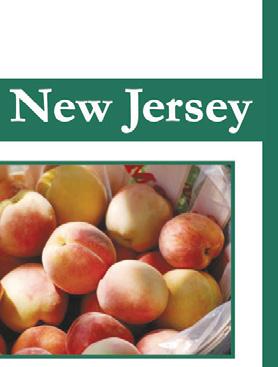





Generally speaking, anytime we are setting records with our weather, it is not good for agriculture. Whether the temperatures are too high or too low, or we have been getting record amounts of rain, or been going for a record amount of time without rain, farmers, as well as those involved with farming, or more than likely going to pay the price.
Let’s take a look back a year or so ago and see some of the weather extremes we had to deal with here in the Garden State. The spring of 2024 was fairly uneventful. We did not have much in the way of cold temperatures that could have affected fruit buds or early vegetable plantings. There was relatively normal precipitation early on in the spring, but then things dried out quite a bit as we got into late May and early June. The summer brought average precipitation early on, but then things really dried out in August through November as we saw one of the driest fall seasons on record. Winter temperatures were slightly colder than we have had during the last few years, and the precipitation that we received










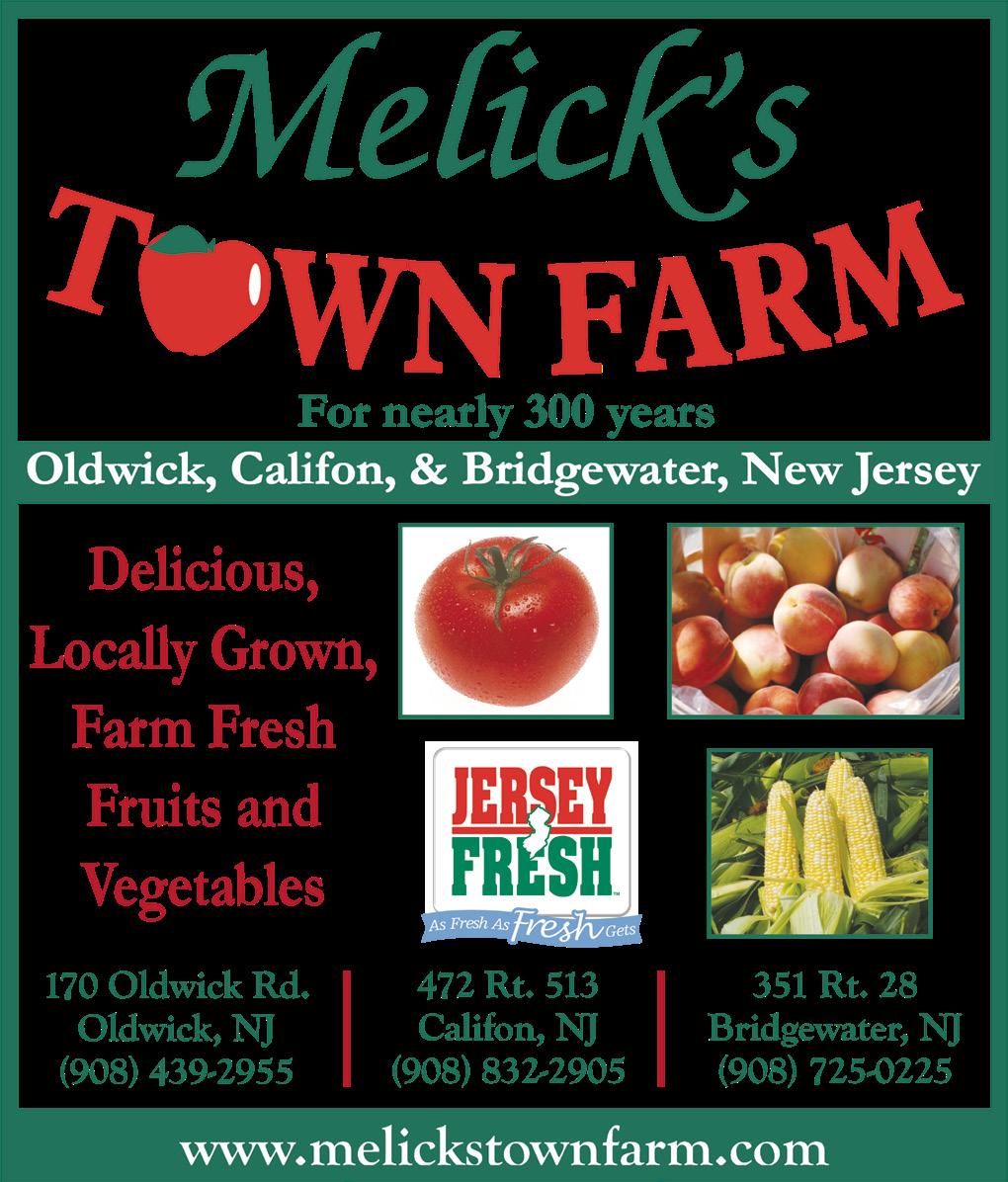





The Town Farmer
By Peter Melick Agricultural Producer
Setting Records
was not enough to get us out of our drought that started late last summer. Early spring of 2025 started off dry with moderate temperatures, but then once we hit May it started raining and we were able to make up for several months of drought in only a few short weeks! What had been a very cloudy and cool late spring and early summer quickly changed when we got blasted by some furnace-like triple digit temperatures at the end of June.
Now, let’s go back and analyze how different sectors of agriculture were affected with some of these swings in the weather, and what that meant for farmers and consumers. In regards to the drought last fall, I would have
to say that it actually helped our business. First of all, fruits and vegetables, generally speaking, hold up very well under dry conditions. Because these crops had received enough moisture during the summer months, they were well on their way once conditions dried out during October and November. And because there was very little disease pressure, these crops held very well in the field and in storage after they were harvested.
Another way in which the dry conditions helped us was that there were no rainy weekends last fall. And because nothing hurts sales for us like a rainy Saturday and Sunday, we had a banner fall season in terms of marketing
weather. Sure, we ended up having to drill a new well last winter, but overall, the positives outweighed the negatives.
But the opposite of last fall happened this spring. As most of you will remember, as dry as it was last fall, it was that wet this May and June. At one point, I think we had seven straight days with measurable rainfall. That is unheard of. And all of that rain certainly put a damper on our spring sales of plants and flowers. Regardless of what some other columnists in this publication will tell you, gardening in the mud is no fun. And picking your own strawberries and cherries in the rain is not that much fun either. Plus, as a grower, it is just plain hard to
get any fieldwork done under such wet conditions. We try to schedule different plantings of our flower and vegetable crops so that they mature and ripen throughout the summer, giving us a consistent supply for our customers. With the wet conditions we had this spring, that was very hard to accomplish.
So, as we move into the late summer and fall of 2025, let’s hope for a nice and even weather pattern. I would sign up right now for average temperatures and average rainfall, as long as it only falls overnight during the week. Happy August!
Editor’s Note: Peter Melick is co-owner of Melick’s Town Farm in Oldwick and a 10th-generation New Jersey farmer. Peter is Mayor of Tewksbury Township, Hunterdon County, NJ. He also served as a director for the New Jersey Farm Bureau and is a past president of the New Jersey State Board of Agriculture. Peter has also been featured on NJN, News 12 New Jersey and on the Fox Business Network.






Learn About Organic Fertilizers Eco-friendly grass seed mixtures Questions specific to your lawn
Forest Bathing in New Jersey
(Continued from page 14)

shadows and the natural lighting peering through the forest canopy. We also practiced breathing exercises. We were then asked to imagine a waterfall, a meadow, a beautiful landscape, color movements, listen for animals, and to smell the air, all with our eyes closed. We learned how to become one with nature while feeling joy and peace.
We then opened our eyes and stood up. After pausing for a minute, we walked a little more and I spotted a really cool big rock that I leaned against. I must admit, I had an incredible interaction with nature.
After about an hour, the walk ended, and we recapped how fortunate and grateful we all were to be thankful for becoming one with nature.
It was now time to leave this special microclimate and head back to the hot, humid, sunny day. I love visiting Crystal Springs Resort. There is always something new to experience there. Gene Mulvihill was a genius when he envisioned and created the environment and the well landscaped

gardens on the property surrounding the resort’s lodges. Andy, Julie, and Chris Mulvill all deserve a massive amount of credit for continuing to maintain their father’s vision and dream.
Tours are on Saturdays at 10:30 a.m. and reservations are definitely required. Space is very limited, and only for those staying at either of the two resort lodges.
Editor’s Note: Tom Castronovo is executive editor and publisher of Gardener News. Tom’s lifelong interest in gardening and passion for agriculture, environmental stewardship, gardening, and landscaping, led to the founding of the Gardener News, which germinated in April 2003 and continues to bloom today. He is also dedicated to providing inspiration and education to the agricultural, gardening, landscaping, nursery, and outdoor living communities through this newspaper and GardenerNews.com.
Tom Castronovo/Photo
Wild Turkey Nature Trail is approximately three miles long and painted with local flora and fauna.
Tom Castronovo/Photo Crystal Springs Resort’s Jennifer Dignon connects with nature on the picturesque Wild Turkey Nature Trail adjacent to Grand Cascades Lodge.
UNITED STATES DEPARTMENT OF AGRICULTURE NEWS
Farm Security is National Security
U.S. Secretary of Agriculture Brooke L. Rollins alongside U.S. Secretary of Defense Pete Hegseth, U.S. Attorney General Pam Bondi, and U.S. Secretary of Homeland Security Kristi Noem announced the next pillar of her Make Agriculture Great Again initiative: USDA’s National Farm Security Action Plan. This historic plan elevates American agriculture as a key element of our nation’s national security, addressing urgent threats from foreign adversaries and strengthening the resilience of our nation’s food and agricultural systems.
“We feed the world. We lead the world. And we’ll never let foreign adversaries control our land, our labs, or our livelihoods,” said Secretary Rollins. “This Action Plan puts America’s farmers, families, and future first—exactly where they belong. Under President Trump’s leadership, American agriculture will be strong, secure, and resilient. He will never stop fighting for our farmers and our ranchers.”
Recent events highlight the critical need for this action. Last month, the U.S. Department of Justice charged foreign nationals, including a Chinese Communist Party member, with smuggling a noxious fungus into the United States—a potential agroterrorism weapon responsible for billions in global crop losses. The scheme involved a U.S. research lab and highlighted a disturbing trend: America’s enemies are playing the long game—infiltrating our research, buying up our farmland, stealing our technology, and launching cyberattacks on our food systems. These actions expose strategic vulnerabilities in America’s food and agriculture supply chain.
Protecting the homeland begins with protecting our farmland and the National Farm Security Action Plan puts American farmers and ranchers first by safeguarding our food supply, strengthening critical infrastructure, and defending U.S. agricultural innovation from foreign adversaries.
This National Farm Security Action Plan will serve as the launch point for USDA to work in further unison with governors, state legislators, and federal partners to further integrate agriculture into the broader national security efforts over the coming months and years reaffirming the critical nature of agriculture and the need for a cross governmental approach. Defending access to American abundance and preserving the American experiment is the essence of agriculture security - and it is why farm security is national security.
“Foreign ownership of land near strategic bases and US military installations poses a serious threat to our national security. The Farm Security Plan will put America First and keep our bases across the homeland secure,” said Secretary of Defense Pete Hegseth.
“Farm security is national security. The Department of Justice will continue working to prosecute those who threaten American agriculture, investigate cases of potential agro-terrorism, and protect America’s farmers from illegal threats at home and abroad,” said Attorney General Pam Bondi.
“Food policy is national security policy. A country who cannot feed itself, cannot take care of itself, and cannot provide for itself is not secure. We have to be able to feed ourselves to make sure that no other country ever controls us…We will never let any other country control our food supply or control our people because we will always be the great United States of America,” said Secretary of Homeland Security Kristi Noem.
Judge Vaden Sworn in as Deputy Secretary at the U.S. Department of Agriculture
Judge Stephen Alexander Vaden was sworn in as the Deputy Secretary of the U.S. Department of Agriculture. Vaden, of Union City, Tennessee, joins Secretary of Agriculture Brooke L. Rollins to not only deliver on the promises of President Trump but also to execute the agriculture and nutrition policies of the One Big Beautiful Bill.
“I am so excited to welcome Deputy Secretary Vaden to the USDA team,” said Secretary Rollins. “His policy and legal acumen will be a tremendous asset to the Department, and I look forward
to his partnership as we continue to revitalize rural America and make certain American farmers continue to provide the safest, most affordable, and most abundant food supply in the history of the world.”
“I thank President Trump and Secretary Rollins for their trust in me to support the incredible men and women of American agriculture,” said Deputy Secretary Vaden. “I look forward to getting to work to support the Secretary in Making Agriculture Great Again.”
“Great American Farmers Market” to Celebrate America 250 on National Mall
In celebration with America 250, U.S. Secretary of Agriculture Brooke L. Rollins today announced the U.S. Department of Agriculture (USDA) will be hosting the Great American Farmers Market on the National Mall in Washington, D.C., during National Farmers Market Week. The market will run this summer from August 3rd to August 8th, farmers and vendors will be invited to join the historic event.
“There is no greater celebration of America’s legacy than through American agriculture! Farmers helped found our nation and for centuries have diligently passed down the craft of feeding, fueling, and clothing their fellow patriots. The Great American Farmers Market is a celebration of the almost 250 years since our inception and a chance to honor the heart of our nation: agriculture,” said Secretary Rollins.
The Great American Farmers Market will commemorate America’s 250th anniversary by recognizing agriculture as the cornerstone of our history, providing direct market access for America’s farmers, bringing rural America to the heart of Washington, inspiring the next generation of farmers and ranchers, and Making America Healthy Again with fresh food grown
by our farmers.
USDA was founded by President Abraham Lincoln as the “People’s Department” during the Civil War. USDA remains the only federal agency located directly on the National Mall, which signifies the importance of American agriculture and the work of USDA. President Trump is following Lincoln’s legacy through his commitment to “Growing America,” by prioritizing support for small family farmers and ensuring their vital role in the nation’s prosperity.
USDA has hosted a farmers market since 1995 to provide direct market access for vendors in the Washington, D.C., area. The Great American Farmers Market will expand this major market opportunity to farmers across all 50 states.
The ribbon cutting and grand opening of the Great American Farmers Market will be on August 3rd, 2025. For market hours, daily programming updates, and vendor sign-ups, visit our website. Vendors including farmers, ranchers, bakers, dairy producers, beverage producers, fishermen, food concessions, and meat processors are encouraged to apply. To learn more about other farmers markets across the country, visit www.usdalocalfoodportal.com


Get Your Cameras and Comfortable Walking Shoes Ready
2025 celebrates the 15th anniversary of Liberty Farm. This family-owned and operated Sussex County farm is responsible for the first and largest sunflower maze agritourism event in New Jersey.
Liberty Farm was established by farmer Raj Sinha using sustainability practices. He maintains the farm with his wife and son.
The Sinha family started growing black oil seed sunflowers, which are most commonly used for cooking oil and bird seed, for the New Jersey Audubon Society.
Today the farm is home to nearly 125 varieties of sunflowers, from the classic yellow to chocolate sunflowers and red sunflowers, and even one called the “Just Crazy” sunflower.
You can experience the ultimate 2025 sunflower adventure from August 21 – September 21, weather depending, at 101 Route 645 in Sandyston. Check their website for updates.
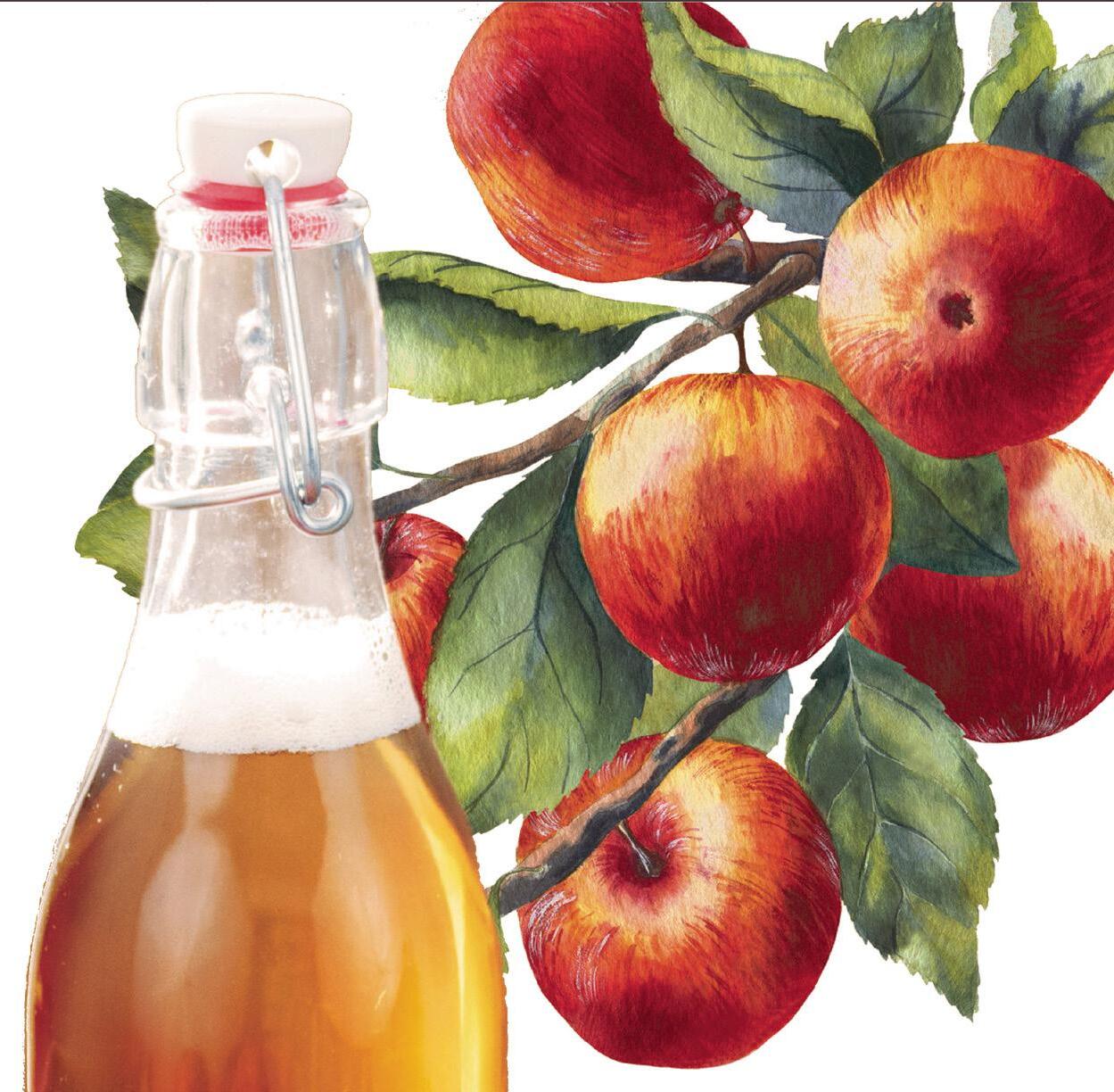
Tom Castronovo/File Photo
Gardener News

NORTHEASTERN ASSOCIATION OF STATE DEPARTMENTS OF AGRICULTURE NEWS
The Northeastern Association of State Departments of Agriculture convenes the following 10 states:
NEW JERSEY DEPARTMENT OF AGRICULTURE
PENNSYLVANIA DEPARTMENT OF AGRICULTURE
2025 Urban Agriculture Tour, Highlighting Investments in Innovation, Equity, and Opportunity Feeding Progress in Urban Communities
Agriculture Secretary Russell Redding, Education Secretary Dr. Carrie Rowe, and Community and Economic Development
Secretary Rick Siger kicked off the Shapiro Administration’s 2025 Urban Agriculture Tour at Bidwell Training Center in Pittsburgh, where a high-tech greenhouse expansion funded through a historic Agricultural Innovation Grant is underway, and urban students are training for in-demand culinary and horticulture careers.
“Feeding opportunities for growth and economic prosperity in urban neighborhoods feeds all of our futures,” Secretary Redding said. “The Shapiro Administration is committed to strengthening local economies through investments that improve quality of life and health by making sure families have fresh, healthy food within reach, and the inspiration, resources, and knowledge to grow fresh food in the future.
Sec. Redding and other Shapiro Administration leaders crossed the state to meet dynamic Pennsylvanians working to increase fresh food access in areas where it is scarce; break down racial, ethnic, and
socioeconomic barriers; and overcome historical inequities to grow opportunities for their communities to thrive.
Last March 2025, the Shapiro Administration announced a $500,000 investment in Pennsylvania Urban Agriculture Infrastructure Grants in 10 counties to help address longstanding challenges in city neighborhoods, including Pittsburgh. Pennsylvania has invested more than $3.2 million in urban agriculture through the program, one of many Pennsylvania Farm Bill grants and initiatives, since 2019.
In total, 160 Urban Ag projects in 19 counties are expanding fresh food access in locations often served by a single convenience store.
Funded projects include greenhouses, offgrid energy and water systems, cold storage, and tools to expand the reach of organizations that feed economic, community, and personal growth through agriculture.
Read about more investments to keep Pennsylvania agriculture, and Pennsylvania communities, healthy, competitive and thriving at shapirobudget.pa.gov.
CONNECTICUT DEPARTMENT OF AGRICULTURE Legislation Signed Supporting Growth in Connecticut’s Agriculture Industry
Governor Ned Lamont announced that he has signed into law two major pieces of legislation approved by the Connecticut General Assembly this session that encourage growth within Connecticut’s agricultural sector.
The bills include Public Act 25-152, which is known as the “CT Farm Bill” and among its several provisions creates a new tax credit for farmers’ investments in eligible machinery, equipment, and buildings; and Public Act 25-141, which establishes a land access grant program within the Connecticut Department of Agriculture to improve farmers’ access to land.
Public Act 25-152 includes provisions to increase the statewide municipal property farm tax exemption from $100,000 to $250,000 and permits municipalities to offer additional farm property tax exemptions of up to $250,000 on top of the $250,000 statewide exemption. It also provides immunity to agritourism operators for any civil action for personal injury or property damage and exempts hoop houses and high tunnels from building permitting or construction standards. In addition, a section of the bill regulates the use of drones for agricultural purposes, establishes a manure management program to be administered by the Connecticut Department of Agriculture (DOAG), provides for the purchase and operations of shipping container farms to grow food for schools and food pantries, and mandates that anyone selling soil amendments must register annually with DOAG.
Public Act 25-141 authorizes DOAG to establish and administer a grant program to preserve farmland and increase farmer access to land. Land access is the top barrier to entry for new and beginning farmers in Connecticut and the Lamont administration has made significant progress in expanding access to farmland. The passage of this legislation builds upon that momentum.
“Agriculture is deeply rooted in Connecticut’s history and the CT Farm Bill and farmland access bill are the latest wins for agriculture under the Lamont administration’s thoughtful leadership,” Connecticut Agriculture Commissioner Bryan P. Hurlburt said. “Since 2019, we’ve invested tens of millions in farms, families, and food — and this legislation gives us the tools to sustain a vibrant, diverse ag sector and protect the land we need to do it. I’m also deeply grateful to the farmers and stakeholders who voiced their support, and to the General Assembly for recognizing that a strong ag economy means a strong state economy.”
Bobcat Company names Laura Ness Owens its Chief Marketing Officer
Bobcat Company has appointed Laura Ness Owens as chief marketing officer. In this newly established executive role, Ness Owens will lead global marketing, brand, customer experience and corporate communications strategies for the organization.
Since joining Bobcat in 2003, Ness Owens has held a variety of senior leadership roles spanning marketing, communications, brand management, dealer development and commercial training. Most recently, she served as vice president of global brand and communication and North America marketing. Her earlier career includes experience in government administration, political communications, special event management, campaign management and public policy.
“The Bobcat brand stands among the world’s most iconic, and having the privilege to help shape its journey has been nothing short of extraordinary,” Ness Owens says. “I’m energized by the opportunity to build on this legacy—empowering our talented team, deepening our connection with customers and communities, and driving bold, meaningful progress for the future.”
In her new role, Ness Owens will report to Scott Park, CEO and vice chairman of Doosan Bobcat.
As part of this strategic evolution, Bobcat is also promoting Kristen Hintermeyer, who will now be the vice president of North America marketing. A 20-year Bobcat leader, Hintermeyer will steward the Bobcat brand in North America while driving demand for its products and services.
Meanwhile, Lanelle Vasichek has been promoted to senior director of global brand. In her new role, she will lead global brand strategy and stewardship, with a focus on customer experience, brand activation, campaign development, strategic partnerships and licensing.
Learn more about the Bobcat Company at https://www.bobcat.com
Full Moon
August 9, 2025
Advertise
Celebrate National Sunflower Day on August 2, 2025
Historically, sunflowers have been around since about 1000 BC. Native Americans used sunflowers as a valuable food source, as well as for oil, paint, textiles, and during ceremonies. Interestingly, the sunflower tends to face east, avoiding the hot sun.
Celebrate National Watermelon Day on August 3, 2025
Watermelon is grown worldwide and there are well over a thousand varieties from which to choose. Visit a pick-your-own watermelon patch or pick one up from your local farmer’s market.
SHARE THE Gardener News! FORWARD IT TO A FRIEND



Please visit www.GardenerNews.com and click on the Advertising Link in the center of the Navigation Bar to view our Media Kit. We can be contacted through our Contact Us Form, also on the Navigation Bar. Thank you!
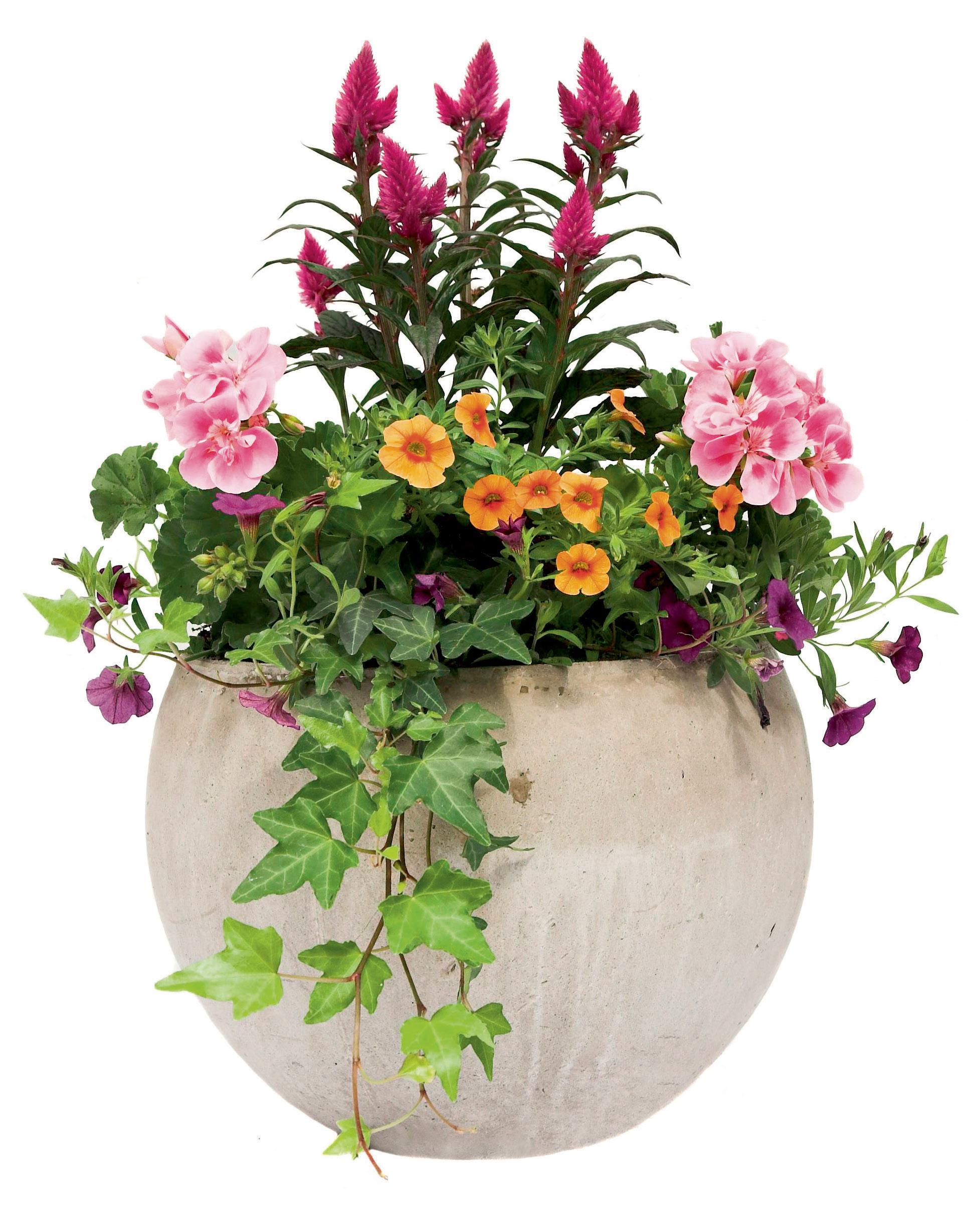


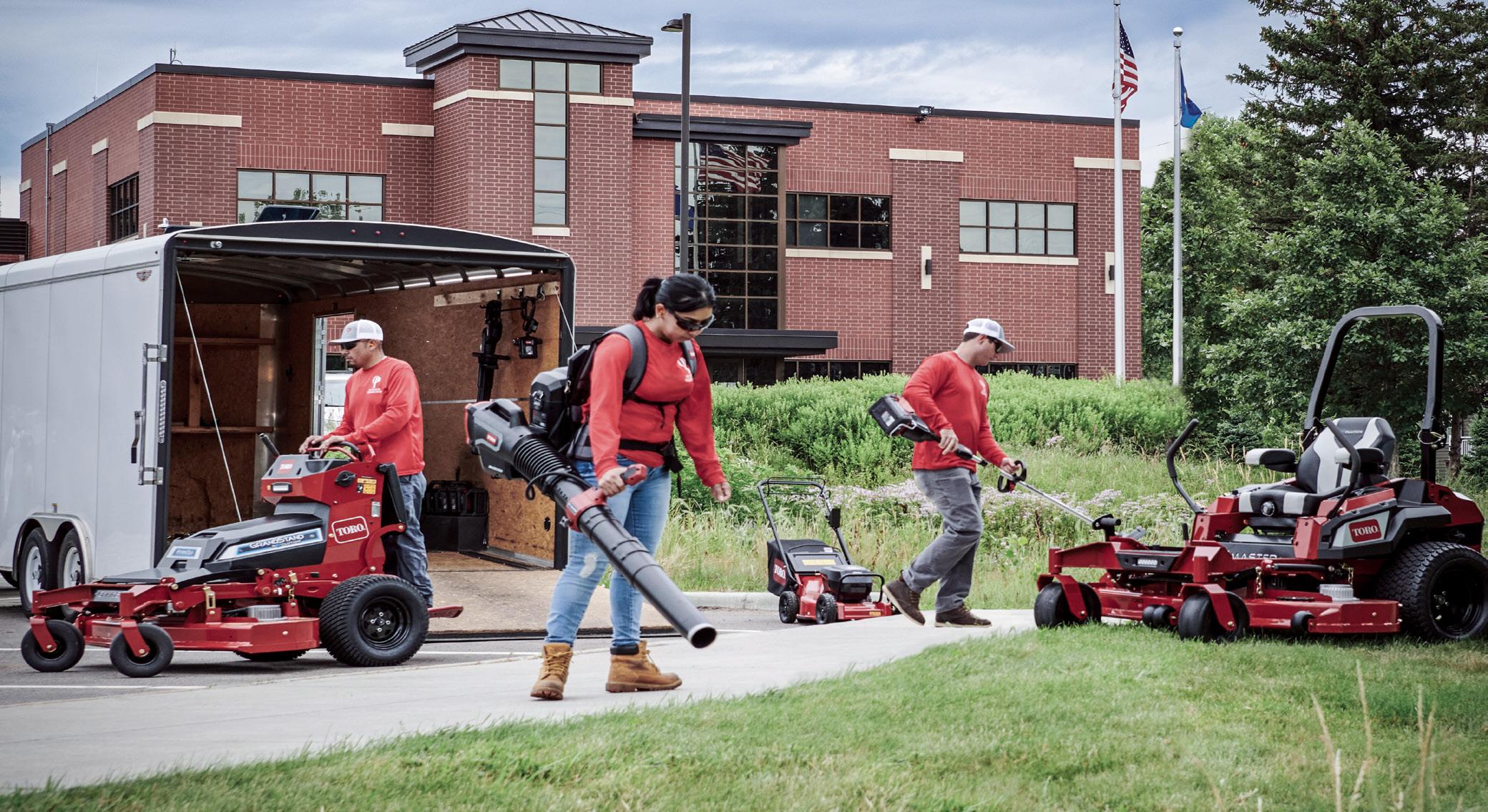





7500-G SERIES ZERO-TURN
96” TURBO FORCE ® CUTTING DECKS
PRODUCTIVITY TO A NEW LEVEL
Impressive 96” wide cutting deck folds to 75” to fit in
REVOLUTION HANDHELD PRODUCTS
ALL DAY PERFORMANCE
The fully interchangeable 60V Max*
Flex-Force battery system powers the entire line of Revolution commercial grade handheld tools. The backpack, available as a power source for the leaf blower, string and hedge trimmers, and is built for comfort and ready to keep jobs moving all day.


STAND-ON MOWERS
TRACTION & HANDLING
A wide stance and optimal balance enhance hillside stability and control.
CUSHIONED SUSPENSION
Flex-Ride operator platform suspension self-compensates for operators of all sizes, resulting in less fatigue and higher productivity throughout the day.



SPRAYMASTER®
Dual
Provide

A variety of attachments and accessories such as Mulch Dump, Pro-Force blower, snow thrower, power broom, tine rake, dethatcher and BOSS snow blade all provide the ultimate in productivity.


